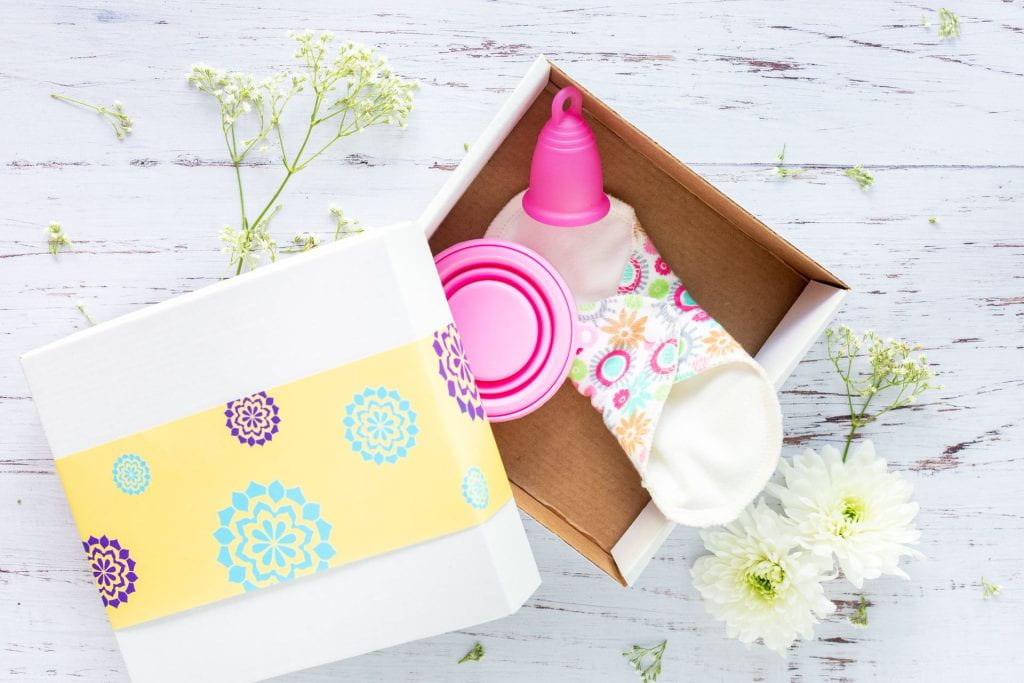Period Products: A Case for the Cup

For something that is natural and unavoidable for anyone with a uterus, periods are incredibly unsustainable. According to National Geographic, people who menstruate are predicted to use between 5,000 and 15,000 plastic-based pads and tampons during their lifetime, all of which are meant to be discarded in landfill — though many end up blocking septic systems or polluting our oceans.
It’s important to understand just how much inorganic waste accumulates from menstrual products and how we can choose to reduce some of that waste. The major action platform Global Citizen has a comprehensive review of period products on their website that I would strongly recommend reading, but until then, here’s a summary of some of the most important facts they’ve gathered:
- Most tampons and pads are made up of cotton, plastics, rayon, and other synthetic fibers, and are designed to be worn for up to about 6 hours. Many tampons have plastic applicators, and they may be wrapped in plastic.
- Many tampons are made of up to 90% plastic, which is the equivalent of four plastic bags.
- The plastic elements in tampons and pads take between 500 and 800 years to decompose.
- In addition to discarding 5,000-15,000 period products in their lifetime, people are predicted to throw away 400 pounds of product packaging throughout their lives.
- Approximately 12 billion pads and 7 billion tampons are discarded annually, which is equal to about 12 pounds of carbon dioxide annually per person.
- Tampons that are made with chemicals like rayon can pollute groundwater, soil, and air after being discarded and ending up in a landfill.
- Tampons that get flushed down the toilet and end up in the ocean can take up to 20 years to break down and can be harmful to marine life when ingested.
That’s a lot of unnecessary plastic ending up in the wrong places. People with regularly occurring periods use these products over the course of about a week every month out of necessity, but there is also an element of convenience — it is always easier to use disposable products than reusable ones. But what if we could cut the waste we produce with each cycle in half, or even entirely?
In the same review, Global Citizen outlines a few sustainable alternatives to single-use tampons and pads, such as:
- Organic tampons and pads, which can be compostable. However, it can be difficult to access a compost bin when disposing of these kinds of products, and they are not always accepted as compost because they can be considered medical waste.
- Reusable pads, which can be used for three to five years and are made of machine-washable cloth. A pack of three reusable pads can cost up to $40, which is an economical alternative to regular pads, which cost around $8 for a pack of 20.
- Menstrual cups, which are made of silicone or latex and can be used for about six years. These cost up to $40 and can be worn for twelve hours a day. Cups have 1.5% of the environmental impact that disposable tampons and pads do.
- Period underwear, which can be worn all day and last for up to two years. These cost up to $30 for a pack of three pairs.
Additionally, menstrual discs are a great alternative that are similar to the cup (they can be used for up to twelve hours and last up to ten years) but have a more flexible feel that can fit more comfortably. Like the cup, these cost up to $40.
By shifting to any of these more sustainable options, people with periods can massively reduce their annual plastic consumption and prevent the accumulation of excess waste in landfills and the ocean. It might make sense to consider these alternatives because, remember, your period will be around for another 30 years.


